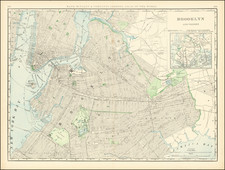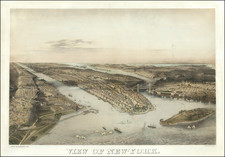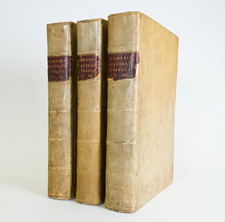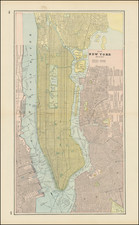Original Hand Drawn Birdseye View of the Glen Cove Starch Works -- Glen Cove, Long Island
Fascinating and remarkably detailed view of the Glen Cove Starch Works and surrounding area of Glen Cove, drawn circa 1870. This is likely the original sketch drawn for an advertising broadside and a trade card promoting Duryea's Glen Cove Starch Works.
The view illustrates a factory complex, mansard roof front entrance, surrounding promenade with pedestrians and horse drawn carriages, with shipping docks and the surrounding community in the background. At the right is Glen Cove Creek, emptying into Hempstead Harbor.
The image includes pencil notes throughout the image, describing the materials with which the factory buildings were built (brick, gravel, iron, etc.), quite likely a guide note to a future colorist. This is almost certainly the original artwork for the promotional material referenced above.
Glen Cove
Glen Cove became one of the prime passenger terminals for ships arriving to New York City beginning in about 1828. A thriving tourist industry developed, along with an upscale thriving second home community for wealthy New Yorkers in the Hempstead Harbor area. Over time, the region became known as the Gold Coast.
In the 1850s the Duryeas Corn Starch Manufacturing Company moved their main plant from Oswego to the south side of Glen Cove Creek. By the end of the Civil War, the factory was the largest producer of starch in the world. At the height of production, the plant covered 30 acres and over 700 workers, with chemical buildings, blacksmith shops, corn elevators, cooperage, a box factory, store, lumberyard, print shop and newspaper. A complete company town evolved, with local living quarters and a company store.
The company would remain open until 1900, with the factory surviving until it burned in 1906.









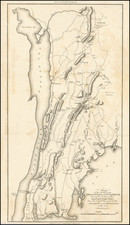
![[Brooklyn] A Map of ten Lots of land bounded on high water mark as the same was deemed to be on the 20th day of May 1761 on the East River now Brooklyn Ferry in Kings County._ Resurveyed according to the original Map thereof on the first day of May 1813. . .](https://storage.googleapis.com/raremaps/img/small/47354.jpg)
